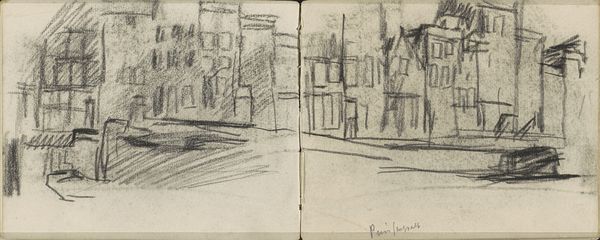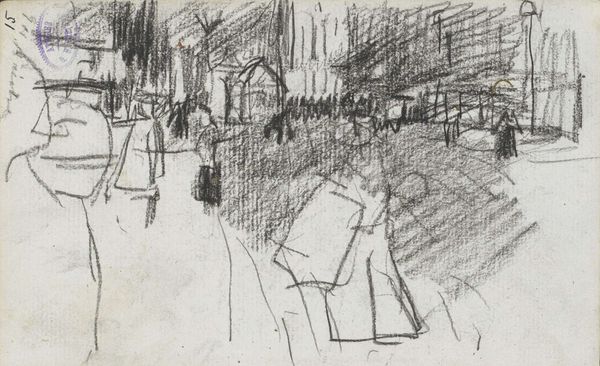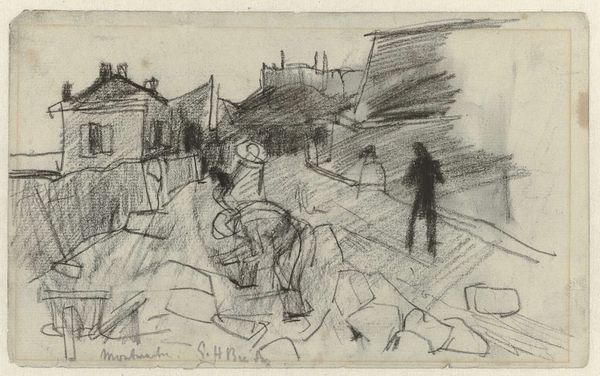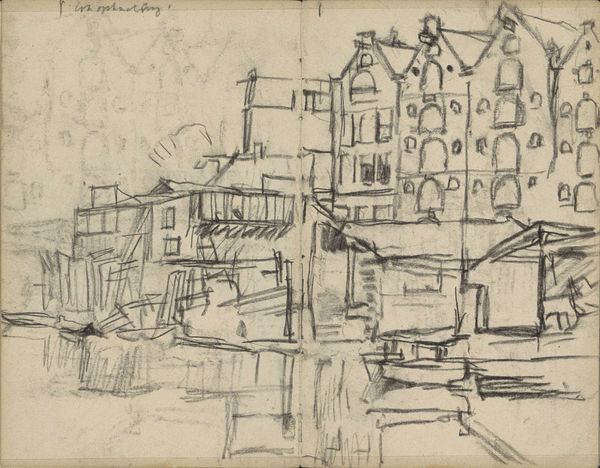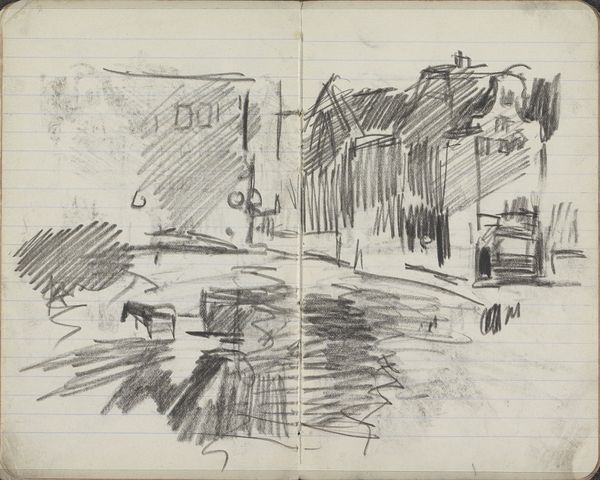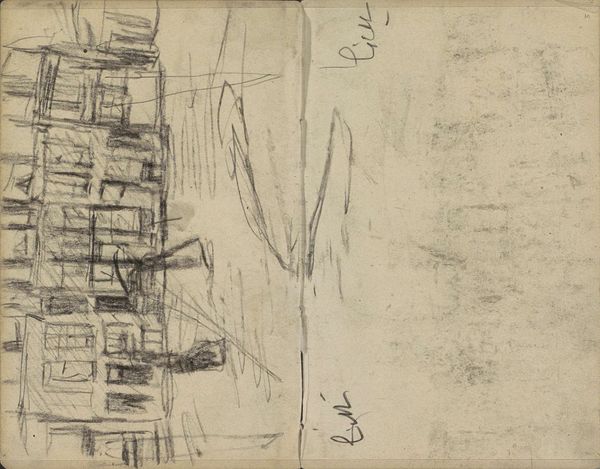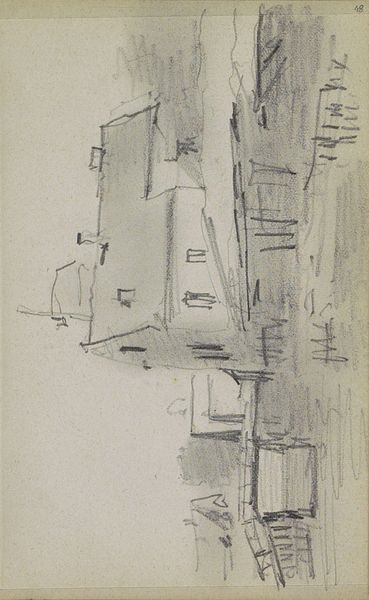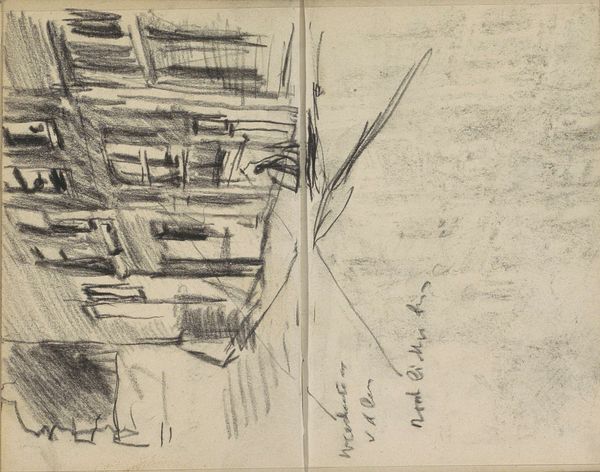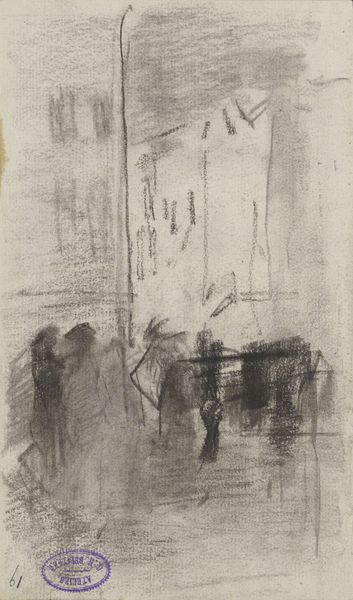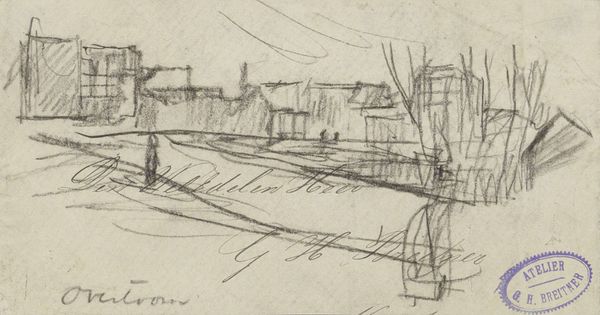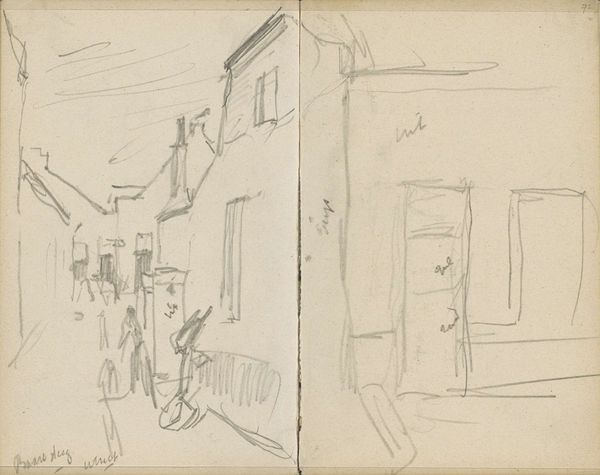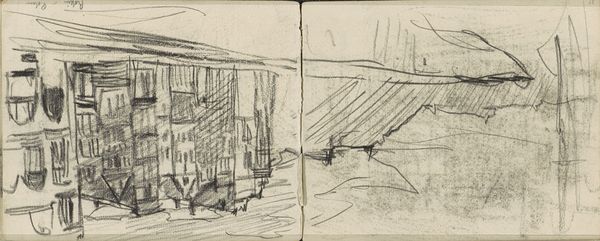
Dimensions: height 202 mm, width 257 mm
Copyright: Rijks Museum: Open Domain
Editor: This is "Winkelstraat in Amsterdam bij regen" (Street in Amsterdam in the Rain) by George Hendrik Breitner, made sometime between 1886 and 1923. It's a drawing created with pencil and charcoal. The rain-slicked street gives it such a somber, almost oppressive mood. What do you see in this piece, considering its composition? Curator: The formal elements immediately stand out. Note how Breitner uses the contrast between the densely shaded areas, particularly the street surface and the figures in the foreground, against the lighter, sketchier treatment of the buildings. This establishes a compelling dynamic of dark and light that is structurally critical to our apprehension of form and volume. What does that stark contrast suggest to you about the artist's technique and intent? Editor: Well, it seems almost unfinished in parts, a sketch that prioritizes capturing the impression of a scene rather than photographic detail. The stark contrast emphasizes the weight of the rain and the bustling yet subdued quality of the city. Curator: Precisely. Observe the artist's application of line—short, choppy strokes contrasted with longer, more deliberate ones—creates a sense of depth and spatial recession. The repetition of vertical forms—building facades, figures, and even the suggestion of lamp posts—works to establish a visual rhythm, yet that visual structure, through its careful arrangement, reinforces the idea of urban life's underlying patterns. Can you identify further ways that Breitner builds spatial coherence, in spite of the loose style? Editor: Yes! The darker strokes on the left clearly establish the side of the street. It almost looks like we are observing the street scene through a window. And, despite being unfinished, it looks very realistic because of the masterful play between shadow and light. It really pulls me in! Curator: Indeed. Through an assessment of the relationship between marks on a surface and what those relations make visible to us, we apprehend a profound sense of the ephemeral captured in the sturdiest form of pencil and charcoal. Editor: I definitely appreciate it more after examining how the formal aspects work together. Thank you for pointing out elements that I might otherwise have missed.
Comments
No comments
Be the first to comment and join the conversation on the ultimate creative platform.
